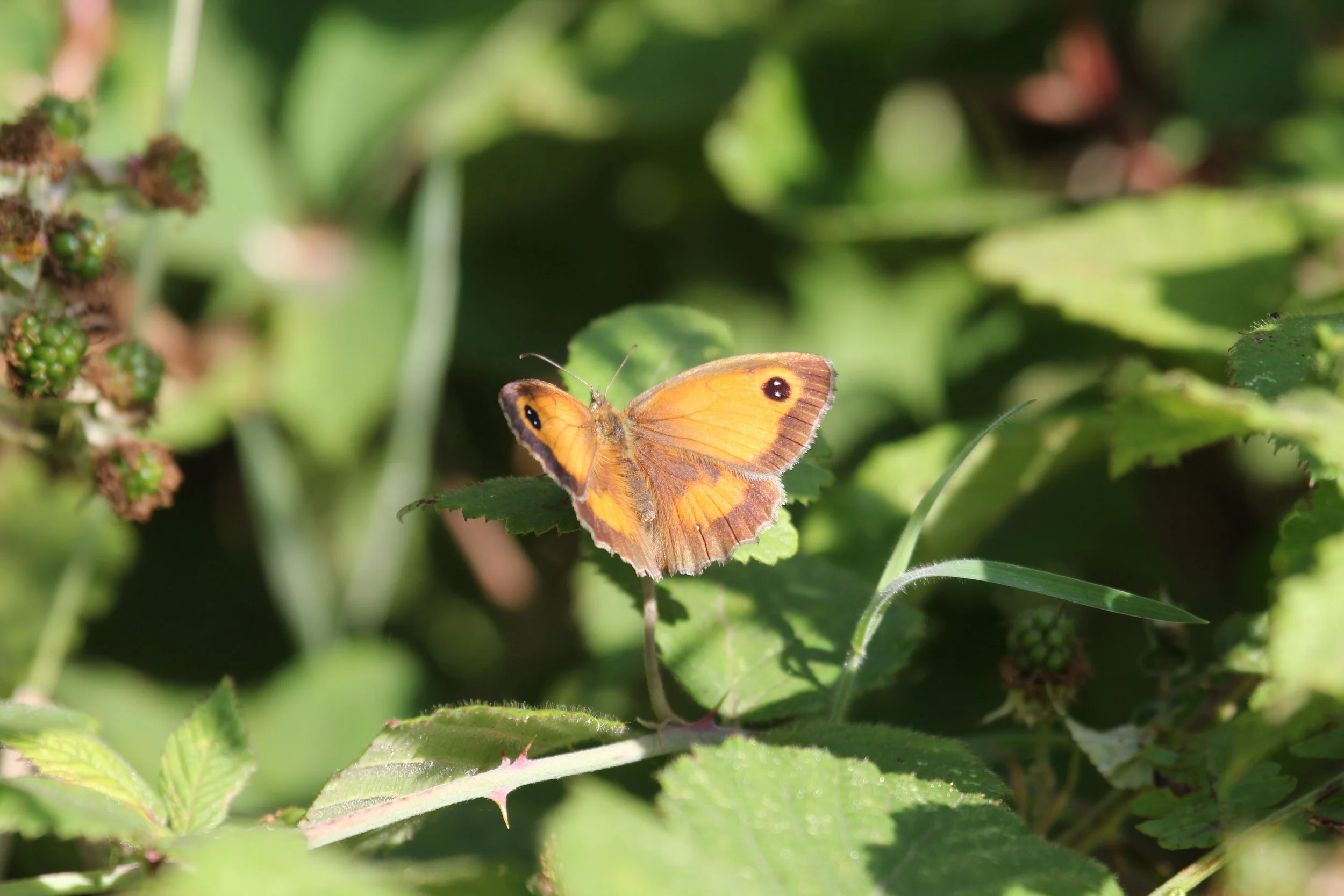Week Nine: RSPB's Arne Reserve
I’ve been a bit rubbish, and due to some personal circumstances I haven’t been able to complete the Summer ID Challenge over the last couple of weeks. But hopefully, with a bit of luck, things are back on track now. So without further ado, here is week nine, and the first coastal exploration of the challenge
An overnight stay on the Purbeck Isles wouldn’t be complete without a trip to the RSPB’s stunning Arne reserve. This place has got everything; coast, salt marsh, ancient oak wood pine forests and heath land. It’s an incredible site, with a huge array of wildlife - plus they do a pretty good breakfast in the cafe!
We were spoilt for choice with items to ID so let’s get stuck in and see what we found.
Bell Heather (Erica cinerea)
Bell Heather
It’s coming to favourite part of summer, that stage where between July and September, a purple tinge is starting to creep into the landscape. I see it when I walk along the heathlands or through woodland edges and I have always known it has just heather. It is heather - we have a few types in the UK, but that’s not a good enough ID for me.
The heather in question is bell heather, which is easily identified by the dark purple and pink bell shaped flowers. The dark green leaves can also be used to ID the species as they are shaped like needles and grow up the stem in threes.
It could be easily confused with cross leaved heather, but the bell heather’s flowers are smaller and grow all the way up the stem, unlike cross leaved with tends to form only on one side.
You can read more about bell heather on the Wildlife Trusts page here - which is where I identified my species, by checking my photo against their identification tips.
Gatekeeper (Pyronia tithonus)
Gatekeeper Butterfly
There were butterflies in abundance at Arne, especially on the bramble patches that lined parts of the marked trails. However it was this specific species that we seemed to encounter the most, so it made sense that this was the one to ID. It also spent a lot of time basking in the sun with its wings wide open, which made it easy to get photos of the markings.
The butterfly in question is a meadow brown, also known as the hedge brown. It is orange in colour, with varying brown patches and a strip of brown that traces the edges of the wings, and a singular eyespot. It’s relatively common and can be found in a variety of habitats such as scrubland, hedgerows and open woodland.
Due to it’s open winged basking preferences, I was able to get clear photos that I could compare with the ones in the Collins Wild Guide Butterflies and Moths, which allowed for a relatively easy ID. I also found a wealth of information on the UK Butterflies website.
Common Sea Lavender (Limonium vulgare)
Common Sea Lavender
Whilst I was busy in the brambles photographing gatekeepers, Bill was down on the saltmarshes where he found this pretty little plant.
“What’s this purple thing” he called to get my attention and I was amazed to sea that huge sections of the marsh were splashed with mauve. I remember reading something in a magazine about now being the time of year when sea lavender began to bloom, so I assumed that was what this was.
Fooled by the name, I stooped down to take a big sniff, expecting that heady herbal scent to fill my nostrils. Nothing. That’s because sea lavender isn’t actually related to lavender at all. It’s clusters of mauve and lilac flowers grow at the tops of their green stems and attract all sorts of pollinating insects.
It favours coastal habitats, especially salt marshes and can be seen in bloom from July to October. I was able to identify this plant by going on a hunch and googling sea lavender so that I could compare my photos. I also found the Wildlife Trusts guide a helpful resource.
Small Red Damselfly (Ceriagrion tenellum)
Small Red Damselfly
First off, you have to excuse the awful, not quite in focus photo - this little chap was so small and in such a tangle of grasses that my camera had a pretty hard time picking up on this delicate find.
We were walking through a sort of wet land, pond section of the reserve when a tiny red thread caught my eye, floating through the air in front of me. I was entranced, as I watched it alight gently on the most delicate stem. It had to be a damselfly; dragonflies are too big and bulky, this was delicate and tiny, and fragile.
I typed in red damselfly into google and I was met with two options - the large red damselfly, or the small red damselfly. The clues in the title!!
My culprit was too delicate to be the larger of the two, and it didn’t have the black markings. Comparing it to the photos on the British Dragonfly Society website, I was happy that we had stumbled across the small red.
These fairy like creatures are found in the shallow pools found on heathland bogs, and are actually rather rare - their presence being restricted to the heathland areas in the south England and west Wales. They can be seen on the wing from June to August and it’s the males that are all red in colour, the females actually vary in colour.
I’m so pleased that these colourful creature put itself in our path, even if it was rather tricky to get a photo of.






